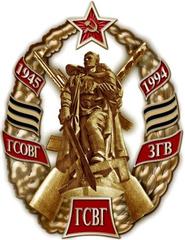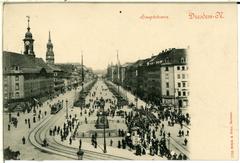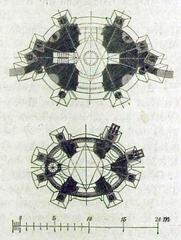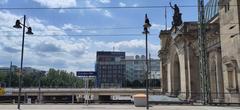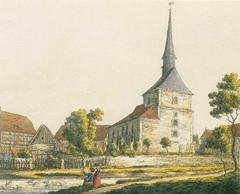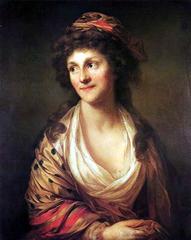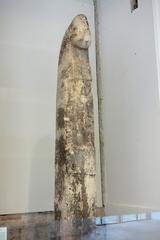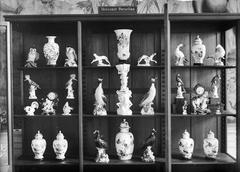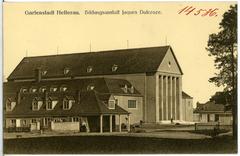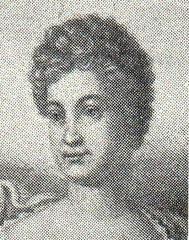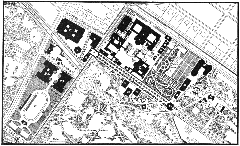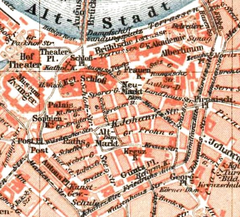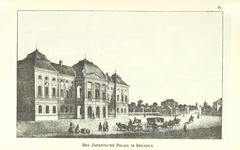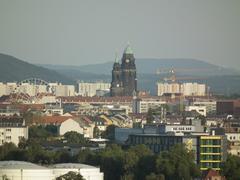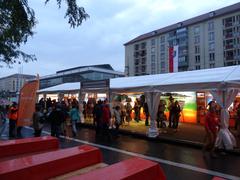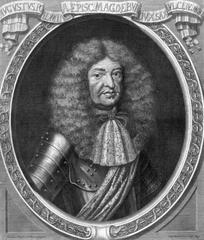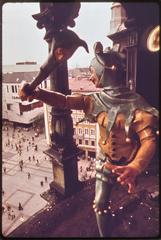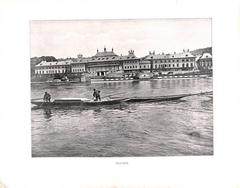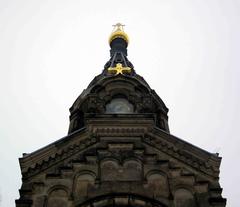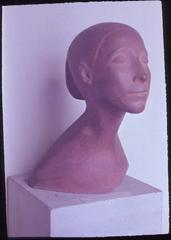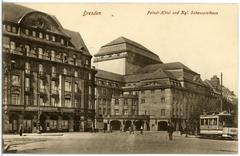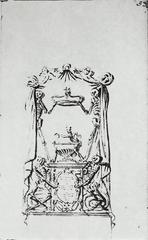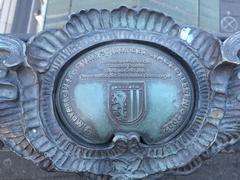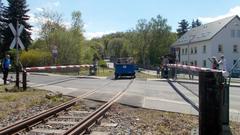
Golden Rider Dresden: Visiting Hours, Tickets, and Historical Sites Guide
Date: 04/07/2025
Introduction
The Golden Rider (Goldener Reiter) is one of Dresden’s most iconic and celebrated monuments, embodying the city’s Baroque grandeur and its enduring cultural spirit. Erected in the 18th century, this gilded equestrian statue of Augustus the Strong stands as a radiant symbol of Saxony’s historical legacy and artistic achievement. Whether you are a history enthusiast, art lover, or casual traveler, this comprehensive guide offers insights into the monument’s origins, artistic and cultural significance, practical visitor information, and tips for fully appreciating one of Dresden’s most treasured landmarks (de.wikipedia.org, dresden.de).
Table of Contents
- Introduction
- Origins and Commissioning of the Golden Rider
- Artistic Influences and Symbolism
- Construction, Installation, and Pedestal
- Wartime Fate and Postwar Restoration
- Cultural and Urban Significance
- Visiting the Golden Rider: Hours, Tickets, and Accessibility
- Preservation Challenges and Modern Restorations
- The Golden Rider in the Urban Landscape
- Frequently Asked Questions (FAQs)
- Practical Visitor Tips
- Events and Festivities
- Visuals and Media
- Conclusion & Call to Action
- References
Origins and Commissioning of the Golden Rider
Conceived as a monumental tribute to Augustus the Strong, Elector of Saxony and King of Poland, the idea for the Golden Rider began in 1704 with initial models by Balthasar Permoser. However, it was not until 1732–1734 that the statue was realized by French artist Jean Joseph Vinache and cast by Ludwig Wiedemann. Instead of the customary bronze, the monument was crafted from hammered copper and covered with fire-gilded gold leaf, creating its signature shimmering appearance. The statue was unveiled at Neustädter Markt in 1736, a few years after Augustus’s death (de.wikipedia.org).
Artistic Influences and Symbolism
The Golden Rider draws inspiration from classical equestrian statues, notably the Marcus Aurelius monument in Rome and Donatello’s Alfonso of Aragon. Augustus is depicted in Roman armor with a laurel wreath, emphasizing his ambition, military prowess, and cultural sophistication. The statue’s orientation—facing northeast toward Poland—underscores Augustus’s dual rule and strategic vision for Saxony (dresden.de).
Construction, Installation, and Pedestal
Standing approximately 4.5 meters high (including its pedestal), the Golden Rider is a striking presence at the head of Hauptstraße. The pedestal, completed by Constantin Lipsius in 1884, features a Latin inscription enumerating Augustus’s titles and further accentuates the Baroque composition (de.wikipedia.org).
Wartime Fate and Postwar Restoration
During World War II, the statue was dismantled in 1944 to protect it from air raids and stored in a safe location. After the war, extensive restoration was carried out between 1953 and 1956 under Walter Flemming. Additional regilding in 1965 and a major restoration between 2001 and 2003 have preserved its brilliance for future generations (aviewoncities.com).
Cultural and Urban Significance
As a symbol of Dresden’s Baroque identity, the Golden Rider serves as a cultural landmark at Neustädter Markt, bridging the historic Altstadt (Old Town) and Neustadt (New Town). Its prominence makes it a meeting place for locals, a backdrop for city festivals, and a recurring motif in Dresden’s visual culture—appearing on postcards, souvenirs, and even local product labels (dresden.de).
Visiting the Golden Rider: Hours, Tickets, and Accessibility
- Visiting Hours: The Golden Rider is an outdoor monument accessible 24/7, year-round, with no restrictions.
- Tickets: There is no entrance fee or ticket required to visit the statue. Guided tours that include the Golden Rider as part of a larger Dresden historical sites itinerary may have associated costs.
- Accessibility: The site is wheelchair accessible with flat, paved surfaces and is served by public transport (tram lines 3, 6, 9, and 11 to “Neustädter Markt”).
- Guided Tours: Several local operators offer walking and cycling tours that include the Golden Rider, providing historical context and fascinating anecdotes (Dresden Walks).
- Amenities: The surrounding Neustadt district features numerous cafés, restaurants, and shops, making it convenient for visitors to relax and explore further.
Preservation Challenges and Modern Restorations
Continuous exposure to weather and pollution has necessitated several restorations over the centuries. The most recent major restoration in 2003 involved regilding and structural repairs. The city of Dresden regularly inspects and maintains the monument to ensure its integrity and luster. Visitors are encouraged to respect the monument by refraining from climbing or touching the statue (de.wikipedia.org).
The Golden Rider in the Urban Landscape
Situated at Neustädter Markt, the Golden Rider anchors the northern end of the Augustus Bridge and marks the gateway to Dresden’s vibrant Neustadt district. Nearby attractions within walking distance include the Augustus Bridge, Blockhaus, Japanese Palace, Frauenkirche, Zwinger Palace, and the Semper Opera House, offering a rich itinerary for cultural exploration (aviewoncities.com).
Frequently Asked Questions (FAQs)
Q: What are the Golden Rider Dresden visiting hours?
A: The monument is accessible 24/7, with no restrictions on visiting hours.
Q: Is there a ticket required?
A: No, visiting the Golden Rider is free of charge.
Q: How can I get there?
A: The site is easily reached by tram (lines 3, 6, 9, 11 to “Neustädter Markt”), by foot across the Augustus Bridge from Altstadt, or by car (limited parking available).
Q: Are guided tours available?
A: Yes, the Golden Rider is included in many local walking and cycling tours.
Q: Is the monument wheelchair accessible?
A: Yes, the area is flat and paved, and public transport stops are nearby.
Practical Visitor Tips
- Best Visiting Times: Early morning and late afternoon (“golden hour”) provide the best lighting for photography. The statue is also beautifully illuminated at night.
- Photography: The best angles are from the Augustus Bridge or the square itself, capturing the statue’s gilded surface with Dresden’s skyline.
- Events: The Golden Rider serves as a focal point during major city events like the Dresden City Festival and New Year’s Eve celebrations (Dresden City Festival).
- Safety: The area is well-lit and generally safe, but visitors should remain aware of their belongings during crowded events.
Events and Festivities
- Dresden City Festival: The Golden Rider is often a centerpiece for parades, concerts, and historical reenactments during the annual August festival.
- New Year’s Eve: The statue is a popular gathering point for fireworks and public celebrations.
- Local Traditions: The monument is a favored backdrop for wedding and graduation photos, as well as local storytelling and folklore (Dresden.de).
Visuals and Media
Alt text: The Golden Rider statue in Dresden illuminated at night showcasing its gilded surface.
Alt text: The Golden Rider statue in Dresden during daytime with Augustus Bridge in the background.
Explore the Golden Rider on Google Maps
Conclusion & Call to Action
The Golden Rider is a luminous testament to Dresden’s Baroque heritage and cultural vitality, offering visitors an enriching experience in the heart of the city. Open 24 hours a day and free to all, it stands as a gateway to Dresden’s rich history and modern vibrancy. For the best experience, combine your visit with nearby attractions, join a guided tour, and check local event calendars for special festivities.
Plan your visit today—download the Audiala app for guided tours, audio commentary, and the latest updates on Dresden’s historical sites. Explore related articles on Dresden’s Baroque architecture, and follow us on social media for travel tips and event news. Immerse yourself in the charm and heritage of the Golden Rider and discover why it is a must-see highlight of Dresden.
References
- Goldener Reiter (Reiterstandbild), 2025, Wikipedia
- The Golden Rider, Dresden.de Tourism Official Site, 2025
- Golden Rider Dresden, A View on Cities, 2025
- Goldener Reiter: Augustus the Strong Statue, Sächsische Zeitung, 2025
- Golden Rider Dresden: Visitor Guide, Dresden Information, 2025
- Dresden City Festival, Dresden.de Events, 2025
















